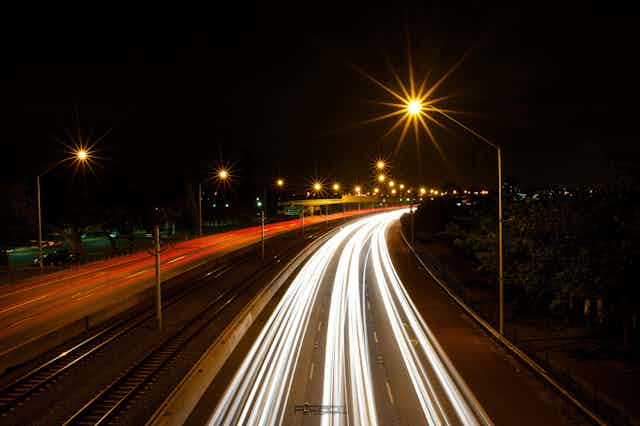The New South Wales and Victorian governments have recently released business cases for their pet motorway projects, WestConnex in Sydney and East-West Link in Melbourne. But will these projects, costing a combined A$20 billion (with A$3 billion being donated by the federal government), really generate the economic benefits promised?
Take WestConnex, for example. NSW Premier Barry O’Farrell claims that this A$11.5 billion motorway will “inject A$20 billion into the economy”. But Infrastructure Australia has poured fresh doubt on such claims, describing big-ticket road promises as electioneering with “only limited regard” for the underlying financial issues.
A glance at the WestConnex business case reveals that some A$18 billion of the claimed economic benefit is merely the value of expected “travel time savings” and “travel time reliability”. This is basically the amount of money that a team of economists (paid by the NSW government) has decided motorists would hypothetically be willing to pay for shorter and more reliable travel times. The actual calculations and underlying assumptions have not been made public.
But, except in the case of freight and business travel, there is unlikely to be any reduction in average travel times; and even if there were, this would not result in any real income or cost-savings for the economy.
For more than a century the average time humans spend travelling each day has been a constant 60-80 minutes. Whenever we’ve been provided with faster transport options, we’ve simply opted to live further from work and travel longer distances, but keep our daily travel times the same.
This is why no previous motorway project, in Sydney, Melbourne, or any other city in the world, has ever succeeded in reducing average daily travel times. Rather, they have resulted in longer average travel distances, more traffic, more sprawl and therefore increased transportation costs. There is no reason to believe that WestConnex or East-West Link will be any different.
Economic injection?
But let’s say, for the sake of argument, that these motorways will reduce average personal travel times. Will this then result in billions of dollars being “injected into the economy”?
Well, no. Basic utility theory suggests that most of the time we save we would spend on other non-productive activities, such as watching TV or checking Facebook. This will not result in any money flowing into the economy, let alone A$18 billion. On the contrary, individual motorists will be financially worse off because of the new tolls - as much as A$20 a day for users of WestConnex.
And how confident can we be that the economists have correctly valued our willingness to pay for these “travel time savings”? They got it wrong with Sydney’s Cross City Tunnel, calculating that 70,000 drivers a day would be willing to pay the A$4.90 toll to save time driving across the Sydney CBD. The actual number turned out to be only 40,000.
Furthermore, increasing the speed of the road network will encourage more people and freight to switch from rail to road. We will end up with more traffic, congestion and toxic exhaust fumes, and calls to build yet more costly motorways through our neighbourhoods to “fix the congestion”, ad infinitum.
These motorway projects may provide some short-term economic stimulus in the form of construction jobs and bonuses for consultants and bankers, but then so could building a A$20 billion giant white elephant on top of Parliament House. However, this short-term economic stimulus will be far outweighed by the long-term economic burden of increased sprawl and car-dependency in an age of increasing petrol prices. Sydney and Melbourne already spend about 13% of GDP on transport, while the average European or Asian city spends only between 5% and 8%.
Much of the funding for WestConnex will come from the privatisation of Port Botany. But selling revenue-generating public assets to invest in infrastructure only makes sense if the economic or social return on that infrastructure outweighs the forgone future revenue from the privatised assets. The NSW government is essentially depriving future taxpayers of revenue from Port Botany, and imposing more tolls on Sydney motorists, simply to make it possible for more of us to move further away from work and suffer longer and more expensive commutes. We will keep our average daily travel times the same, just as we always have done.
There are cheaper, more effective and more sustainable ways of giving us better and more equitable access to jobs and services, and more pleasant daily commutes. The A$20 billion being squandered on WestConnex and East-West Link could instead be used to create jobs in growth areas, build affordable family homes near existing employment centres, and construct new rail lines and busways. Such strategies would help to build and enhance local communities.
Urban motorways only ever succeed in destroying and severing them.

